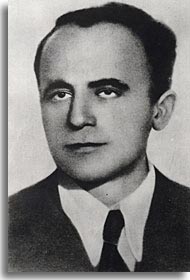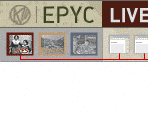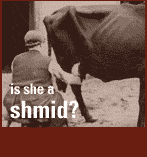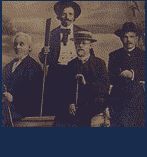

Buchach
The town of Buchach (Buczacz in Polish) was founded at the end of the 17th century on the estate of the aristocratic Polish Buczaczki family. Once part of Galicia  , modern borders have today placed Buchach squarely in the center of Ukraine, not far removed from Ternopil. Nestled in the foothills of a picturesque mountainous region of forests straddling the Stripa River, the community began as both an agricultural village cultivating potatoes and kasha (buckwheat groats) and a bridge town connecting Galicia to eastern Ukraine. Jews arrived as early as the 15th century, when there was little more than a fortress, and worked as beer and brandy distillers, craftsmen, and traders. In 1890, 6,976 Jews formed 60 percent of the shtetl's population.
, modern borders have today placed Buchach squarely in the center of Ukraine, not far removed from Ternopil. Nestled in the foothills of a picturesque mountainous region of forests straddling the Stripa River, the community began as both an agricultural village cultivating potatoes and kasha (buckwheat groats) and a bridge town connecting Galicia to eastern Ukraine. Jews arrived as early as the 15th century, when there was little more than a fortress, and worked as beer and brandy distillers, craftsmen, and traders. In 1890, 6,976 Jews formed 60 percent of the shtetl's population.
Shtetl of Intellectuals and Writers
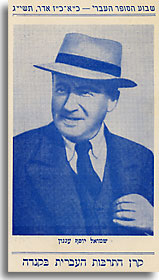

One of Buchach's most important legacies to the world is the writer Shmuel Yosef Agnon, born S.Y. Czaczkes (1888-1970), who led a modern Hebrew literary movement in both Galicia and Israel. The son of a learned Hasidic fur merchant, Agnon began writing Yiddish and Hebrew poems at the age of eight and succeeded in getting some published by the time he was a teenager. He then turned to short stories and novels - written, initially, in Yiddish - which documented the shtetl world of his youth and a traditional way of life that would not last. Hillel Seidman, an admirer of Agnon's from Buchach, described the author as the "literary archivist of the destroyed civilization of Galician Jewry, its traditions and creativeness, all framed in undisturbed piety and simple faith."
As his talents progressed, Agnon became increasingly concerned with the loss of age-old Jewish ways of life, the loss of Jewish faith, and an ever-shifting identity. In 1907, after publishing more than 70 stories and poems, he left Buchach and emigrated to Palestine, where he embraced a more secular and intellectual lifestyle, and wrote in Hebrew. Between 1913 and 1924, he lived in Germany, where he wrote stories in Hebrew and German about pious shtetl Jews, and rallied Jewish youth toward Zionism.
Back in Palestine, Agnon wrote many more stories and novels, including A Guest for the Night, which is based on a visit he made to Buchach in 1930, during which he was shocked by the frighteningly desolate and bleak landscape bereft of all the hope and vitality that he remembered. Among his most important works were Bridal Canopy, Two Tales, and Edo and Enam. Agnon received the Nobel Prize for Literature in 1966.
Another important figure to come out of Buchach was Emmanuel Ringelblum (1900-1944), historian, activist, teacher, and member of the Po'alei Zion  organization, who struggled for Jewish defense and welfare in Warsaw before and during World War II. In addition to co-founding the Jewish Fighting Organization
organization, who struggled for Jewish defense and welfare in Warsaw before and during World War II. In addition to co-founding the Jewish Fighting Organization  in the Warsaw ghetto, Ringelblum worked as an historian until his death, keeping up-to-the-minute archival accounts of ghetto life under Nazi rule. He also founded the Oneg Shabbat Group inside the Warsaw Ghetto. His diaries of this period are among the most famous to survive the war.
in the Warsaw ghetto, Ringelblum worked as an historian until his death, keeping up-to-the-minute archival accounts of ghetto life under Nazi rule. He also founded the Oneg Shabbat Group inside the Warsaw Ghetto. His diaries of this period are among the most famous to survive the war.
Ringelblum was a member of the YIVO Institute for Jewish Research, and in his role as an historian headed up its Historical Institute Division. He worked on many fronts at once, attempting to protect Warsaw's Jews and to alert the rest of the world to their terrible situation.
Emannuel Ringelblum was also a delegate for Po'alei Zion to the 21st Zionist Congress  , which met in Geneva in 1939, just before the war's outbreak, and there he rejected the calls for joining the exodus of Jews to Palestine, opting instead to maintain support for the community remaining in Europe. He was betrayed in 1944 and did not survive.
, which met in Geneva in 1939, just before the war's outbreak, and there he rejected the calls for joining the exodus of Jews to Palestine, opting instead to maintain support for the community remaining in Europe. He was betrayed in 1944 and did not survive.
Shtetl of Debate and Politics
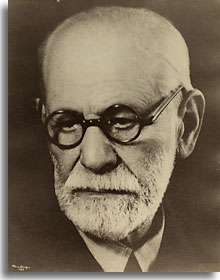

Perhaps Ringelblum's passionate activism began because Buchach was for decades a hotbed of religious and political debate, enjoying every opposing movement of Jews throughout the 19th and 20th centuries: Hasidism, Misnagdim (religious opponents of Hasidim, who were the most numerous during the 19th century), and Maskilim (enlightened Jews, small in number but significant in their influence). The political development of the community was interesting for the ongoing partnerships and feuds among the different groups. During the early 19th century, the wealthy Maskilim bitterly opposed the Hasidic incursion, going so far as to complain to Polish authorities about them. But, for the most part, the community exhibited a great deal of cooperation and relative harmony considering its political and religious plurality.
During the 20th century, the Bund, Agudat Israel, Mizrahi, and other parties each organized in Buchach, but it was largely the Zionists who captured the imagination of this shtetl's Jews.









